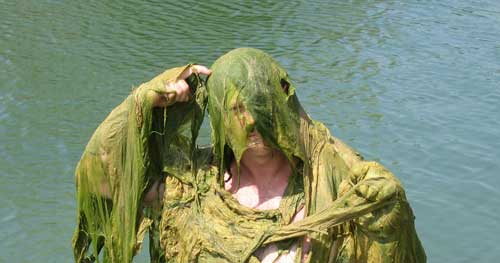Algae is often a catch-all for all aquatic plants and aquatic plant related problems. Not all aquatic plants are algae. Also, not all algae is created equal when it comes to how desirable or undesirable it is in your pond.
Part of the reason many call all aquatic plants algae is because even experts differ on what to call or classify algae. Defining algae is very difficult, but basically, algae is a simple organism that can be composed of one cell or many cells grouped together in a colony. There are three basic types of algae, planktonic, filamentous, and attached or erect forms.
Planktonic algae are single-celled, microscopic plants which are distributed worldwide. Blooms can be bright green, pea soup looking or even a blood red color. They are the base of the food chain and a healthy existing pond or well prepped new pond must have planktonic algae as a food source.
Filamentous algae are called many things such as pond scum or moss, and they are typically found at the surface in the form of greenish mats. Typical growth begins on the edges of ponds and will slowly rise until it arrives at the surface. This series of cells joined together has a slimy, cottony or course texture. It can look like the stringy masses covering the Algae Monster at the top of the page or it can be “scum” as in the picture to the left. Filamentous algae will grow in ponds with higher levels of calcium and phosphorus. It is common to have this type of algae encouraged after ponds are limed to enhance fish production. Filamentous algae typically are of little or no value to you or your pond.
Attached-erect algae are non-rooted but dense. A misconception is that it looks like a higher vascular plant, which causes a lot of confusion. It typically has a gritty and bristly texture and is not much use to the overall pond health.
Blue-Green algae is often the biggest culprit when it comes to “pond scum” problems. Recently, it has been reclassified in the Monera Kingdom which consists of bacteria instead of being classified with other types of algae because the blue-green algae relates more closely to bacteria than other forms of algae. Within the blue-green algae grouping, there can be several varieties that can have many different colors such as red, brown, or yellow. Blue-green algae are nitrogen-fixing organisms and only need nitrogen and carbon dioxide to live, both very prevalent in most ponds. When there is a blue-green algae bloom, it forms dense masses on the surface of the pond and can cover the entire body of water. In fact, it is believed that the Red Sea was given its name from a red species bloom of blue-green algae.




